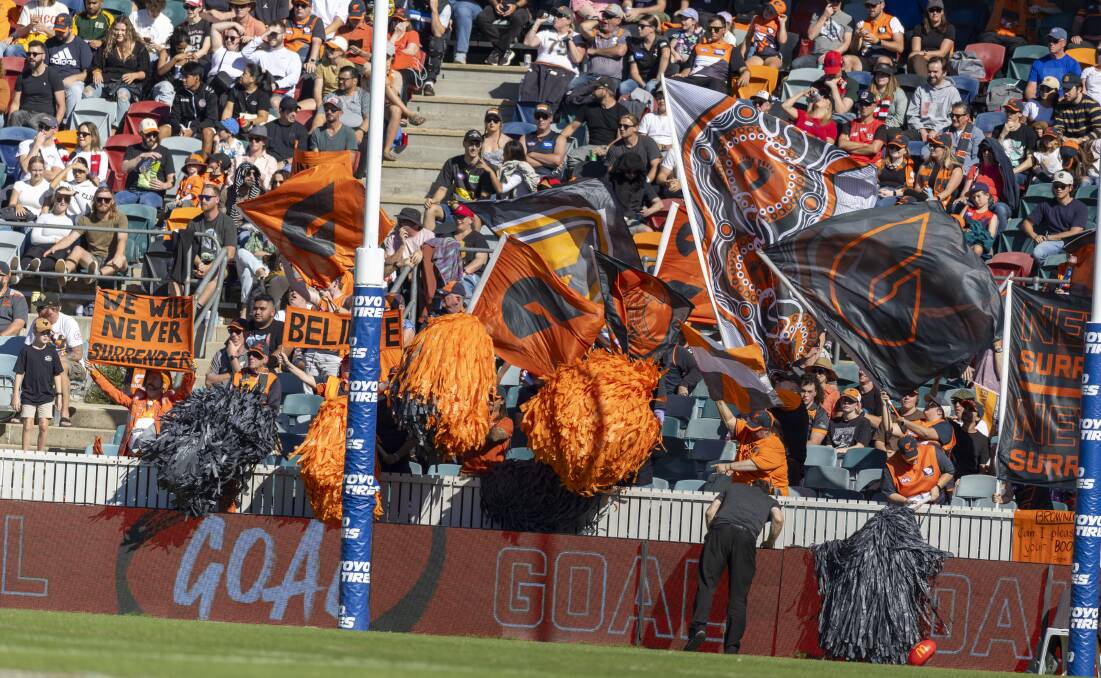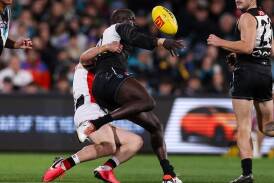There was plenty of fanfare and goodwill across the Australian Rules football community when the AFL's 19th team, the Tasmania Devils, officially launched in mid-March.
Tasmania's debut season has been pencilled in for 2028, but nothing is set in stone until the team's controversial new stadium has been locked in after the state's recent election, which resulted in a hung parliament.
That is all still to play out, but assuming Tasmania does become the league's 19th team, where will the 20th be based?
In May 2023, when announcing Tasmania had finally won its bid, then AFL CEO Gillon McLachlan said it was "most likely" the competition would eventually return to an even number of teams.
This means either an expansion to 20, or a reduction to 18 through a merger or relocation, which has historically been painful and political for players, administrators and fans.
Let us put mergers and relocations aside for the moment and look at expansion.
New frontiers, or 'footy heartland'?
In Australian Rules folklore, the "Barassi line" traces the divide between Australian Rules and rugby (league and union) on the Australian continent. Named after the great VFL champion Ron Barassi, the line is based on the River Murray border separating NSW and Victoria, up to the Gulf of Carpentaria where Queensland meets the NT.
Historically, anyone south or west of the Barassi line played Aussie rules, and anyone north and east, rugby league or rugby union.
So, will the AFL look to add a new team in "footy heartland" - perhaps the Northern Territory (NT) or a third club in South Australia (SANFL powerhouse Norwood has already made a bold bid), or Western Australia?
Or will the AFL look to further expand into areas where rugby league is strong, such as in New South Wales (NSW), Queensland or the Australian Capital Territory (ACT)? Coaching legend Kevin Sheedy has talked up Newcastle as a possibility, while other suggestions have included Sunshine Coast in Queensland, Central Coast in NSW and Cairns in Far North Queensland.
Darwin and Canberra: the logical options?
The NT government has already set up a taskforce - co-chaired by NT Sports Minister Kate Worden and experienced football administrator Peter Jackson, formerly of Essendon and Melbourne - to develop a business case to push for the 20th license.
Darwin is seen by many as a sentimental favourite, as a team in the NT would make the AFL a truly national competition. The NT has produced so many great players and the side could be based in Darwin, with a few games played in Alice Springs (and even potentially Cairns if the team encompassed Northern Australia).
However, any club in the NT would have to overcome the hurdles of a low population, the economics of a new or renovated TIO Stadium, which holds just 12,500 spectators, and an unsuitable climate. Darwin is exceptionally humid in wet season, making the ball slippery and games often unattractive.
One solution may be to play early-season games in Alice until the dry season arrives in Darwin in May.

What about Canberra, which first put its hand up to join the VFL in 1981?
Canberra was originally more of an Aussie Rules town before the Canberra Raiders (NRL) and ACT Brumbies (Super Rugby) took a foothold. This is because when Canberra was founded, many public servants were from Melbourne who took their favourite footy code with them when Australia's capital was moved from Melbourne to Canberra in 1913.
The main obstacle to a new team in Canberra is the fact the AFL's 18th team, the Greater Western Sydney Giants, have already put their flag down in the ACT, with three home games a year plus an academy and a growing membership base.
It would be tough for the AFL to take the ACT off the Giants after all the work they have done.
The power of population and participation
When former VFL boss Ross Oakley kick-started football's forays outside of Victoria in the 1980s, he set a rule of thumb for expansion: for locations south-west of the Barassi line, a population of 500,000+ was required, while for the north-east, a population of 1.5 to 2 million was needed.
Oakley also said a good 20-25 years of investment was required to make expansion work in traditional rugby league territory.
So the variables often cited are population and demographics, 'footy-readiness', alternatives in the market and infrastructure.
Even adjusting for population increase, NT is still a small market. But it often comes top in terms of participation rates - more than 13% of Territorians participate in AFL programs compared to 8% in WA, 6% in SA and 2% in Victoria and 1.9% for NSW/ACT combined.
The NT is also top in terms of adult participation and top four in terms of children's participation.
By contrast ACT is sixth, but still ahead of Queensland and NSW in terms of the kids' participation rates.
At AFL level, the NT produces 56 elite AFL players per million people with only Victoria and SA ahead. ACT produces 17 ahead of Queensland, NSW and Ireland (the only major source of AFL talent beyond our shores).
What about infrastructure?
In terms of infrastructure, both Perth and Adelaide have ready-made stadiums. In SA, the likely third team Norwood already has Norwood Oval that hosts AFL matches during Gather Round. They could also play at Adelaide Oval.
In Perth, Optus Stadium is world class. Darwin and Canberra, though, would need significant upgrades to current grounds, if not the development of new stadiums.
And the winner is...
The decision of where the 20th team should be based is not as clear-cut as Tasmania claiming the 19th license.
The NT is a feel-good story but a small population, difficult climate and financial considerations are hurdles.
Canberra is perhaps second favourite, but a sticking point is GWS' foothold there, which is an important element for a recent expansion club still needing as much support as it can get.
Third teams in WA and SA are viable but do not add much to the competition in terms of new frontiers.
It's an intriguing landscape, but there is no hurry. As the AFL has said, they need time to bed down Tasmania first as the 19th club before contemplating the 20th.
- Tim Harcourt is an industry professor and chief economist at the University of Technology Sydney.
- This article first appeared on The Conversation.





